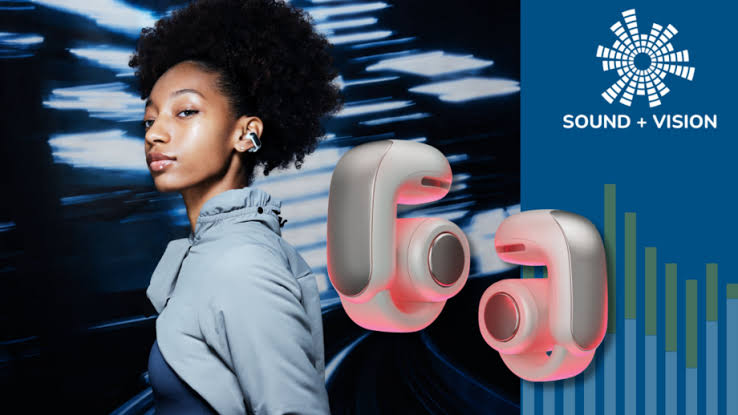Discover the significance of audio quality and music experience in wearable devices. Learn how factors like noise cancellation, comfort, and connectivity impact your listening pleasure and overall well-being. Explore trends and innovations shaping the future of wearable audio technology.
In era where technology increasingly integrates into our daily lives wearable audio devices like headphones and earbuds have become essential accessories for many individuals. Quality of audio and overall music experience provided by these devices are crucial factors. They can significantly impact user satisfaction. This comprehensive exploration delves into why audio quality and music experience are important in wearable audio devices. It examines their effects on listening pleasure, health and usability
Understanding Audio Quality
Audio quality in wearable devices refers to clarity richness and accuracy of sound reproduction High-quality audio ensures users experience music and other audio content as intended by creators Key aspects of audio quality include frequency response distortion levels and soundstage Frequency response measures range of sound frequencies a device can reproduce while distortion levels indicate presence of unwanted noise or alterations A well-balanced frequency response and minimal distortion contribute to more authentic and enjoyable listening experience
Importance of audio quality extends beyond mere enjoyment For audiophiles and music enthusiasts superior audio quality is essential for fully appreciating nuances of different music genres and production techniques For professionals such as musicians or sound engineers precise audio reproduction is critical for tasks like mixing and mastering
Enhancing Music Experience
The music experience is influenced by more than just audio quality. Wearable audio devices play significant role in how users interact with their music. Features such as noise cancellation sound isolation and comfort are integral to creating immersive and enjoyable experience.
Noise cancellation technology is particularly beneficial in noisy environments. These include public transportation or busy workplaces. Active noise cancellation (ANC) uses microphones to pick up external sounds. It generates counteracting sound waves, effectively reducing background noise. This allows users to focus more on their music without distractions. Passive noise isolation is achieved through physical design of earbuds or headphones. It also contributes to minimizing external noise.
Comfort and fit are critical factors that affect overall music experience. Devices that are ergonomically designed and offer customizable fit options ensure that users can wear them comfortably for extended periods. An uncomfortable or poorly fitting device can detract from enjoyment of music. It can also lead to physical discomfort.
Health Considerations
Wearable audio devices also have implications for health both auditory and general well-being. Prolonged exposure to high volumes can lead to hearing loss or tinnitus. This makes it essential for users to choose devices with features that promote safe listening practices. Many modern audio devices come equipped with volume limiters or awareness features. These alert users when volume reaches potentially harmful levels.
Comfort and hygiene are additional health considerations. Devices that do not fit well or are made from non-breathable materials can cause discomfort or irritation during extended use. Choosing devices with breathable materials and adjustable fit options can help mitigate these issues. This choice can contribute to overall well-being.
The Impact of Connectivity and Usability
Connectivity and usability are key factors in overall music experience. Wearable audio devices often feature wireless connectivity options such as Bluetooth. These offer convenience and freedom of movement. High-quality Bluetooth codecs such as aptX or AAC, enhance audio performance and reduce latency. This provides seamless listening experience
Ease of use is another important consideration. User-friendly controls and intuitive interfaces make it easier for individuals to manage their music. They can adjust settings and switch between different devices. Some devices come with additional features such as voice assistants or touch controls. These can further enhance usability and convenience
The Role of Customization and Personalization
Customization and personalization options allow users to tailor their audio experience to preferences. Equalizers and sound profiles enable users to adjust frequency response. This can suit their individual tastes or adapt to different genres of music. Some devices offer personalized sound settings based on user feedback or listening habits. This provides a more tailored experience
Personalization extends to aesthetics as well Wearable audio devices are available in various styles colors and designs. This allows users to choose options that reflect personal tastes and preferences. Customizable features such as interchangeable ear tips or headbands can further enhance comfort and fit
Market Trends and Innovations
The wearable audio market is continually evolving. Advancements in technology drive new trends and innovations. Recent developments include improvements in noise cancellation technology enhancements in wireless connectivity and integration of artificial intelligence (AI) for personalized sound experiences. For example, AI-powered adaptive sound technologies can adjust audio settings automatically based on user’s environment or activity.
Growing popularity of true wireless earbuds reflects trend towards greater convenience and portability. These devices provide freedom of wireless listening without constraints of cables. Advancements in battery life and charging solutions keep improving their practicality.
In summary importance of wearable audio quality and music experience cannot be overstated. High-quality audio enhances enjoyment and appreciation of music. Features such as noise cancellation, comfort and usability contribute to a more immersive and satisfying listening experience. Health considerations also matter. Connectivity and personalization options further impact user satisfaction and overall well-being. As technology continues to advance innovations in wearable audio devices likely further enhance music experience. They meet evolving needs of users
